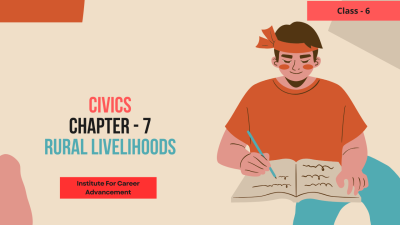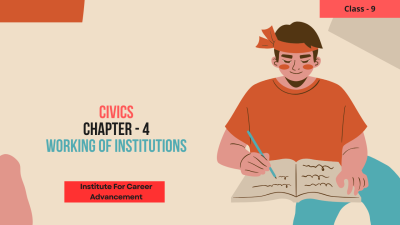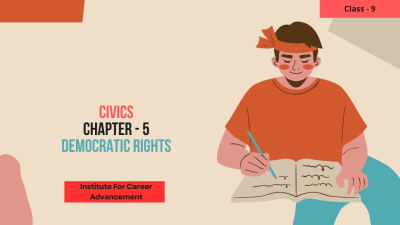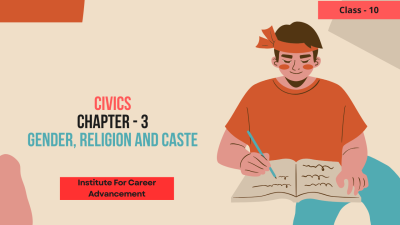Rural livelihoods - Class 6
Rural livelihoods refer to the ways people in rural areas make a living. Unlike urban areas with diverse industries, rural communities often rely on natural resources and traditional skills for their sustenance. Common rural livelihoods include: Agriculture: Growing crops, raising livestock, or both. Forestry: Harvesting timber, collecting forest products (like honey, herbs), or working in forest conservation. Fishing: Catching fish or other aquatic creatures. Livestock rearing: Breeding and raising animals for meat, milk, or other products. Cottage industries: Small-scale businesses that produce goods at home or in workshops. Tourism: Attracting visitors to rural areas for sightseeing, adventure activities, or cultural experiences. These livelihoods are often interconnected. For example, farmers may also rear livestock or engage in cottage industries to supplement their income. Rural communities face unique challenges, such as limited access to markets, infrastructure, and technology. However, they also possess valuable knowledge and skills that can contribute to sustainable development. গ্রামীণ জীবিকা বলতে গ্রামীণ এলাকার মানুষের জীবিকা নির্বাহের উপায়কে বোঝায়। বিভিন্ন শিল্প সহ শহুরে অঞ্চলের বিপরীতে, গ্রামীণ সম্প্রদায়গুলি প্রায়শই তাদের জীবিকার জন্য প্রাকৃতিক সম্পদ এবং ঐতিহ্যবাহী দক্ষতার উপর নির্ভর করে। সাধারণ গ্রামীণ জীবিকা অন্তর্ভুক্তঃ কৃষিঃ ফসল উৎপাদন, গবাদি পশু পালন বা উভয়ই। বনায়নঃ কাঠ কাটা, বনজ পণ্য (যেমন মধু, ভেষজ) সংগ্রহ করা বা বন সংরক্ষণে কাজ করা। মাছ ধরাঃ মাছ বা অন্যান্য জলজ প্রাণী ধরা। গবাদি পশু পালনঃ মাংস, দুধ বা অন্যান্য পণ্যের জন্য প্রজনন এবং গবাদি পশু পালন। কুটির শিল্পঃ ছোট আকারের ব্যবসা যা বাড়িতে বা কর্মশালায় পণ্য উৎপাদন করে। পর্যটনঃ দর্শনীয় স্থান, রোমাঞ্চকর কার্যকলাপ বা সাংস্কৃতিক অভিজ্ঞতার জন্য গ্রামাঞ্চলে দর্শনার্থীদের আকৃষ্ট করা। এই জীবিকা প্রায়শই আন্তঃসংযুক্ত থাকে। উদাহরণস্বরূপ, কৃষকরা তাদের আয়ের পরিপূরক হিসাবে গবাদি পশু পালন করতে পারে বা কুটির শিল্পেও জড়িত হতে পারে। গ্রামীণ সম্প্রদায়গুলি বাজার, পরিকাঠামো এবং প্রযুক্তিতে সীমিত প্রবেশাধিকারের মতো অনন্য চ্যালেঞ্জের মুখোমুখি হয়। তবে, তাদের মূল্যবান জ্ঞান ও দক্ষতা রয়েছে যা টেকসই উন্নয়নে অবদান রাখতে পারে।
English
Last updated
Wed, 27-Nov-2024



















